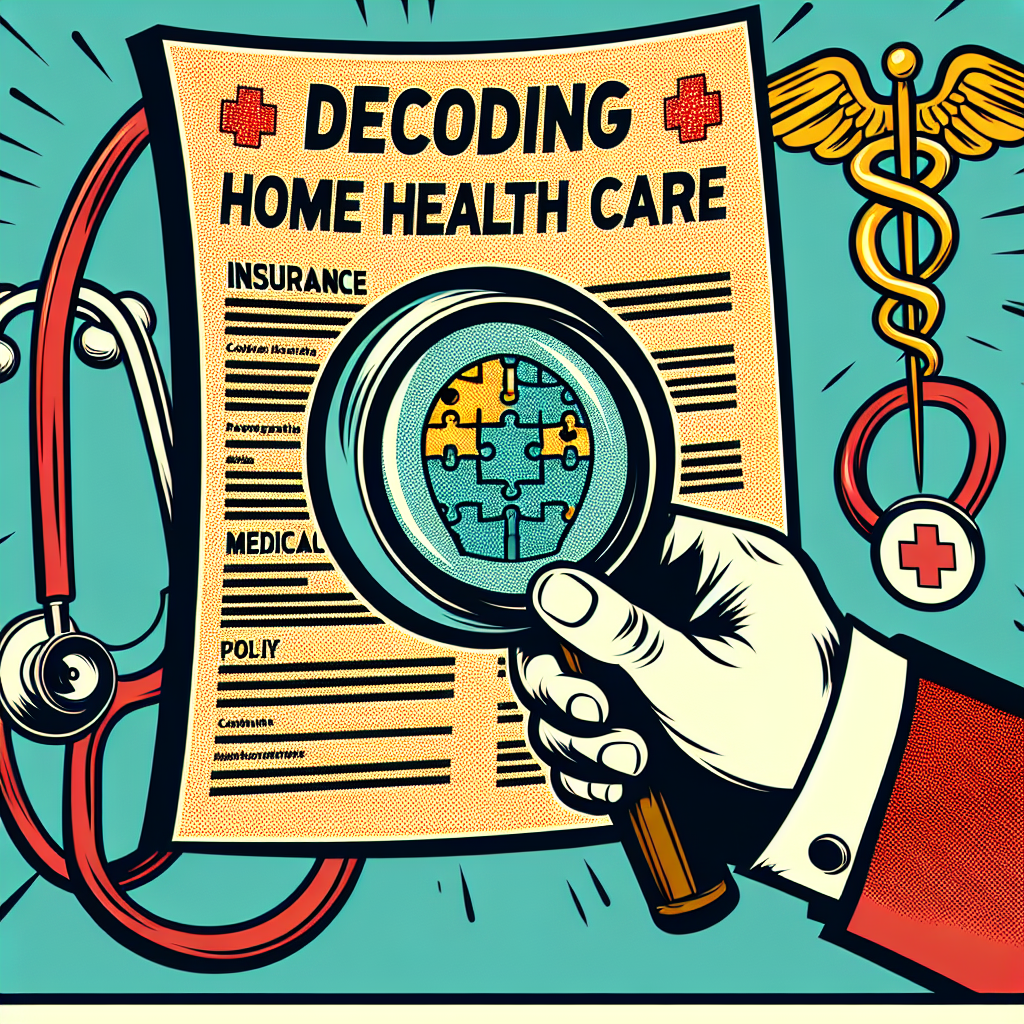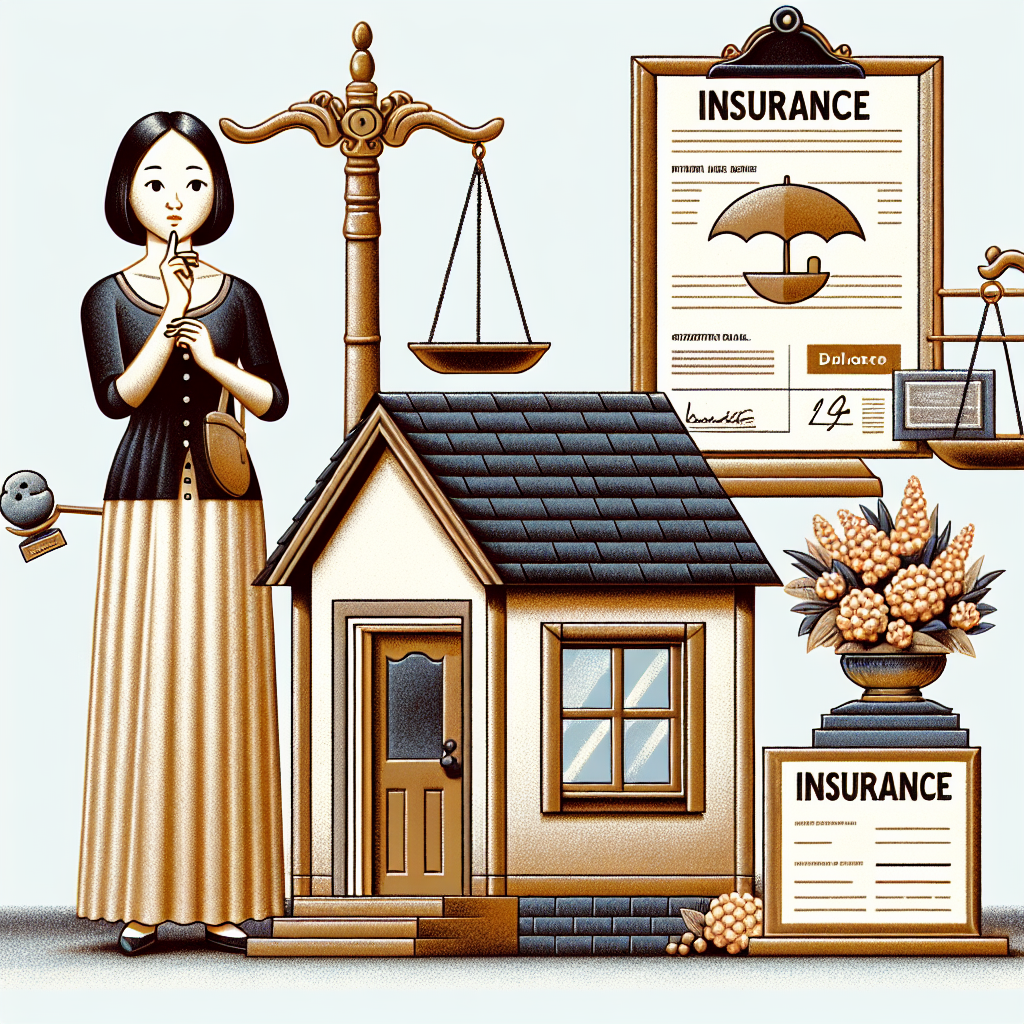Filed under Home Insurance on
Different Types of Home Insurance Coverage Explained

If you own a home or plan to, you’ve probably wondered what your policy really covers and what it doesn’t. In this guide—Different Types of Home Insurance Coverage Explained—you’ll find a clear, practical breakdown of how homeowners insurance works, which protections you get by default, and smart add-ons that can save you from costly surprises. The goal is to help you compare policies confidently, ask sharper questions, and choose coverage that matches your home, your budget, and your risk profile.
Different Types of Home Insurance Coverage Explained at a Glance
Most standard homeowners policies combine several protections under one umbrella. You’ll see them listed as Coverage A through Coverage F. Understanding this framework is the first step toward true clarity.
Coverage A: Dwelling
This pays to repair or rebuild the physical structure of your home if it’s damaged by a covered peril such as fire, windstorm, hail, or theft. Your limit should reflect the cost to rebuild at today’s prices—not your home’s market value. Labor, materials, local code requirements, and architectural details all influence the rebuild cost.
Coverage B: Other Structures
Fences, sheds, detached garages, and gazebos fall here. The default limit is often 10% of Coverage A, but you can adjust it if your property has extensive outbuildings.
Coverage C: Personal Property
Furniture, clothes, appliances, electronics, and personal items are included. Insurers often default to 50%–70% of Coverage A. High-value items like jewelry and fine art have sublimits and may require scheduling (listing with appraisals) to be fully covered.
Coverage D: Loss of Use (Additional Living Expenses)
If a covered loss makes your home uninhabitable, this coverage helps pay for temporary housing, meals, and other extra costs while your home is repaired. It’s a crucial lifeline after large claims.
Coverage E: Personal Liability
Protects you if you’re legally responsible for injury or property damage to others, on or off your property. Common limits range from $100,000 to $500,000; many homeowners choose at least $300,000 and add a personal umbrella policy for additional protection.
Coverage F: Medical Payments to Others
No-fault coverage for minor injuries to guests on your property. Limits are typically $1,000–$5,000 and are separate from liability limits.
Policy Types: HO-1 Through HO-8 (And What They Mean)
When people search for Different Types of Home Insurance Coverage Explained, they’re often looking for the differences among policy forms. Here’s how they break down in plain language.
HO-1: Basic Form
Named-peril coverage with a short list of covered risks. Rare today and typically not recommended because it leaves too many gaps.
HO-2: Broad Form
Named-peril coverage with a more generous list than HO-1. Still more limited than the most popular options.
HO-3: Special Form
The most common policy for single-family homes. It generally provides open-peril coverage for your dwelling (covered unless specifically excluded) and named-peril coverage for personal property.
HO-5: Comprehensive Form
Often considered premium coverage. It typically offers open-peril coverage for both dwelling and personal property and higher limits for certain categories. Ideal if you want fewer gray areas—often priced slightly higher.
HO-6: Condo Unit-Owners
Designed for condos, this covers what you own inside the unit (walls-in improvements, personal property, liability) and includes loss assessment coverage to help with your share of covered losses to common areas.
HO-7: Mobile/Manufactured Homes
Similar to HO-3, adapted for manufactured homes that meet certain foundations and construction standards.
HO-8: Older Homes
Created for historic or significantly older homes where replacement materials are hard to find. Often uses functional replacement cost rather than like-kind materials. Good fit for vintage properties with unique features.
Landlords typically need a dwelling fire policy (like DP-3) rather than an HO policy, because tenant-occupied properties have different risks and require loss-of-rents coverage.
Perils 101: Named vs. Open-Peril Coverage
Policies describe risk in two ways:
- Named-peril: Only specifically listed causes of loss are covered.
- Open-peril (all-risk): Everything is covered unless specifically excluded.
Typical exclusions include flood from rising water, earth movement (earthquake, landslide), neglect, wear and tear, insects or rodents, and power failure originating off-premises. Understanding which approach your policy uses—especially for personal property—is essential to avoid unpleasant surprises.
Replacement Cost vs. Actual Cash Value (ACV)
Two settlement methods drive how much money you receive after a claim:
- Replacement Cost Value (RCV): Pays what it costs to replace or repair with new materials of like kind and quality, without depreciation.
- Actual Cash Value (ACV): Pays the depreciated value. Older roofs, furniture, or electronics can lead to smaller claim payments.
Most well-structured policies provide replacement cost on the dwelling and offer replacement cost for personal property as an endorsement. In many states, insurers have tightened roof coverage, applying ACV settlements or higher wind/hail deductibles on older roofs. If your insurer uses ACV for roofs, understand how depreciation will be calculated and whether upgrading to impact-resistant materials can restore broader coverage or deliver premium discounts.
Deductibles: Flat, Percentage, and Special Storm Deductibles
Your deductible is what you pay out of pocket before coverage kicks in. You’ll typically see:
- All-Other-Perils (AOP) Deductible: A flat amount (e.g., $1,000 or $2,500) for non-wind/hail claims.
- Wind/Hail Deductible: Either a flat amount or, increasingly, a percentage of your dwelling limit in hail-prone regions.
- Hurricane or Named-Storm Deductible: Common in coastal areas, usually 1%–5% of Coverage A, triggered by a named storm meeting certain criteria.
Run the math. A 2% hurricane deductible on a $400,000 dwelling limit equals $8,000 out of pocket per event. Make sure you can comfortably afford the worst-case scenario; the “cheapest” premium can feel expensive during a claim if the deductible is too steep.
What Standard Policies Don’t Cover (And How to Fix the Gaps)
Understanding the edges of coverage is crucial to truly get Different Types of Home Insurance Coverage Explained in a way that leads to better decisions. Here are the big exposures to plan for.
Flood Insurance
Flood—rising water from outside your home—is excluded in standard policies. Coverage is available through the National Flood Insurance Program (NFIP) and private insurers. FEMA data shows nearly every county in the United States has experienced flooding. Private flood markets can offer higher limits, shorter waiting periods, and optional extras like basement contents. Remember NFIP’s typical 30-day waiting period.
Earthquake Insurance
Damages from earth movement (earthquake, sinkhole, landslide) are typically excluded unless you buy a separate policy or endorsement. Deductibles are higher (often 5%–20% of dwelling coverage), but one event can be devastating. In quake-prone areas, consider retrofitting and strapping to reduce both risk and premiums.
Water Backup and Sump Overflow
Water backing up through sewers or drains, or sump pump overflow, is usually excluded unless you add an endorsement. Limits are often modest by default; consider higher limits if you have a finished basement.
Service Line Coverage
Repairs to underground pipes and wiring on your property (water, sewer, electric) are generally your responsibility, not the utility’s. A service line endorsement is inexpensive and can save thousands.
Equipment Breakdown
Covers sudden mechanical or electrical breakdown of systems like HVAC, appliances, and smart home equipment. This is not a home warranty; it’s insurance for unexpected breakdowns, typically with a low premium and a sublimit.
Ordinance or Law
When you rebuild, you must meet current building codes. This endorsement helps pay for code-required upgrades not part of the original structure. Older homes or jurisdictions with strict codes may need higher limits.
Wildfire and Wind Mitigation
Fire is a covered peril, which includes wildfire, but availability and pricing can be challenging in high-risk zones. Insurers increasingly reward mitigation: defensible space, Class A roofs, ember-resistant vents, and sealed eaves. Programs like the IBHS FORTIFIED Home standard can reduce losses and may unlock discounts.
Sublimits: The Hidden Fine Print for Valuables
Even with replacement cost, certain items have low theft or loss sublimits unless specifically scheduled. Common examples:
- Jewelry, watches, and furs
- Firearms
- Silverware and goldware
- Cash and precious metals
- Collectibles, fine art, and rare items
If any single item is worth more than your sublimit (often $1,000–$5,000 for jewelry), consider scheduling it for broader coverage, worldwide protection, and no deductible.
How Much Coverage Do You Actually Need?
Insurers use rebuild cost estimators, but your input matters. Use this simple process to dial in your limits:
- Estimate Rebuild Cost: Multiply square footage by local construction costs, then adjust for finishes, unique features, and code upgrades. Confirm with a contractor if possible.
- Set Coverage A: Aim for 100% of realistic rebuild cost today, then consider extended replacement cost (typically +25% to +50%) to handle inflation spikes or demand surge after disasters.
- Adjust Coverage B and C: Other structures typically default to 10% of A; personal property often defaults to 50%–70%. Create a home inventory to validate this number.
- Review Loss of Use: Choose enough to cover several months of rent plus incidentals if your home is unlivable after a major event.
- Increase Liability: Many homeowners opt for $300,000–$500,000. Consider a $1–$2 million umbrella if you have assets or future income to protect.
- Upgrade Personal Property to Replacement Cost: This avoids depreciation shocks on furniture and electronics.
- Add Key Endorsements: Water backup, service line, equipment breakdown, ordinance or law, and scheduled items are common must-haves.
Real-World Pricing Trends and Why Rates Are Rising
Industry data from the last few years shows significant premium increases across many states, driven by severe weather, higher reinsurance costs, inflated construction prices, and more frequent large losses. In coastal and hail-prone areas, increases have been particularly sharp, and some insurers have paused new business or tightened underwriting standards (for example, declining older roofs or offering only actual cash value settlements for roof claims).
Homeowners can still find value. Competitive markets reward:
- Roof upgrades to Class 4 impact-resistant shingles
- Mitigation steps like wildfire hardening or hurricane shutters
- Smart water leak sensors and monitored security
- Bundling home and auto with the same carrier
- Higher deductibles (balanced with your emergency fund)
As you navigate a tougher market, think of Different Types of Home Insurance Coverage Explained not just as definitions, but as levers you can pull to keep quality protection while controlling costs.
Claims: How to Prepare, File, and Recover
A smooth claim starts long before anything goes wrong. Use this checklist to improve outcomes:
- Document your home: Keep photos or a video walkthrough of every room, including closets and the garage.
- Maintain a home inventory: Save receipts for big-ticket items and store backups in the cloud.
- Know your deductibles: Have the cash on hand to cover them.
- Mitigate immediately: After damage, take steps to prevent further harm (board-up, tarps, shutoff valves). Keep receipts.
- File promptly: Report the claim quickly and provide clear descriptions and documentation.
- Meet the adjuster prepared: Share estimates, photos, and any contractor opinions.
- Track Additional Living Expenses: Keep detailed receipts for temporary housing and meals.
- Don’t discard damaged items: The adjuster may need to see them.
Be mindful of claim frequency. Insurers may surcharge or nonrenew after multiple small claims, so consider paying out-of-pocket for minor issues below or near your deductible. Save insurance for significant losses.
Short-Term Rentals, Home Businesses, and Other Special Situations
Running a home-based business, renting your home on a short-term platform, or renting a room regularly can create coverage holes. You may need endorsements or a different policy type. For condos, verify your HOA’s master policy structure (all-in vs. bare walls) to set the right interior improvements coverage and ensure you have adequate loss assessment limits.
Practical Ways to Compare Quotes
When you’re reviewing multiple proposals, normalize the details before comparing price:
- Policy form (HO-3 vs. HO-5)
- Dwelling limit and extended replacement cost percentage
- Personal property settlement (RCV vs. ACV)
- Deductibles (AOP, wind/hail, hurricane/named storm)
- Roof settlement terms and age restrictions
- Critical endorsements (water backup, service line, ordinance or law)
- Sublimits for valuables and scheduled items
Only after aligning these should you weigh price differences. This is the heart of Different Types of Home Insurance Coverage Explained—apples-to-apples comparisons save you from paying less for meaningfully less protection.
Common Mistakes to Avoid
- Insuring to market value rather than rebuild cost
- Forgetting ordinance or law coverage on older homes
- Skipping water backup on homes with basements
- Assuming flood is included in your homeowners policy
- Choosing a deductible you can’t afford during an emergency
- Not scheduling high-value items like engagement rings or artwork
- Ignoring roof settlement restrictions or age-based limitations
Expert Pointers Backed by Industry Insights
Several trends and expert recommendations can guide your decisions:
- Independent studies of severe convective storms show increasing hail and wind losses across the central U.S., which explains rising wind/hail deductibles and roof restrictions.
- Cost inflation for materials and labor surged during 2021–2023 and remains elevated versus pre-pandemic norms, making extended replacement cost endorsements more valuable.
- The Insurance Institute for Business & Home Safety (IBHS) highlights that mitigation upgrades (FORTIFIED roofs, sealed roof decks, and secondary water barriers) materially reduce loss severity in hurricanes.
- FEMA emphasizes that even homes outside designated high-risk zones can flood, underpinning the case for flood coverage beyond mandatory areas.
- Carriers continue to leverage smart home devices for discounts and early detection—water shutoff valves, leak sensors, and monitored alarms are often rewarded.
Quick FAQs
Is homeowners insurance required by law?
No. But if you have a mortgage, your lender will require sufficient coverage, typically including hazard insurance and sometimes additional protections in high-risk areas.
What’s the difference between HO-3 and HO-5?
Both cover the structure broadly, but HO-5 usually provides open-peril coverage for personal property and higher sublimits for categories like jewelry or electronics. It’s often a more comprehensive option if your budget allows.
Do I need flood insurance if I’m not in a high-risk zone?
Consider it. A large share of flood claims come from moderate- or low-risk areas. Private flood markets can be competitively priced and flexible.
How much liability coverage should I carry?
Many homeowners choose at least $300,000 to $500,000. If you have assets, future income, or higher exposure (pools, trampolines, frequent guests), consider an umbrella policy for $1–$2 million of extra protection.
Where can I get Different Types of Home Insurance Coverage Explained in simple terms?
Use your insurer’s coverage summary and ask an independent agent to walk you through options line by line. Then confirm everything in writing, including deductibles, settlement methods, and endorsements.
A Simple Coverage Optimization Checklist
- Confirm rebuild cost and add 25%–50% extended replacement cost
- Upgrade personal property to replacement cost
- Set realistic deductibles for AOP and wind/hail or hurricane
- Add water backup, service line, and ordinance or law endorsements
- Schedule high-value items beyond sublimits
- Evaluate flood and earthquake based on regional risk
- Install mitigation features for discounts and resilience
- Document your home and keep a current inventory
Final Takeaway
Insurance isn’t one-size-fits-all. Your home’s age, location, roof type, and risk exposures should shape your policy’s design. Keep this guide—Different Types of Home Insurance Coverage Explained—handy as you compare quotes and update coverage each year. By focusing on the right policy form, accurate rebuild limits, smart endorsements, and practical deductibles, you’ll protect what matters with fewer gaps and better value, no matter how the market shifts.





